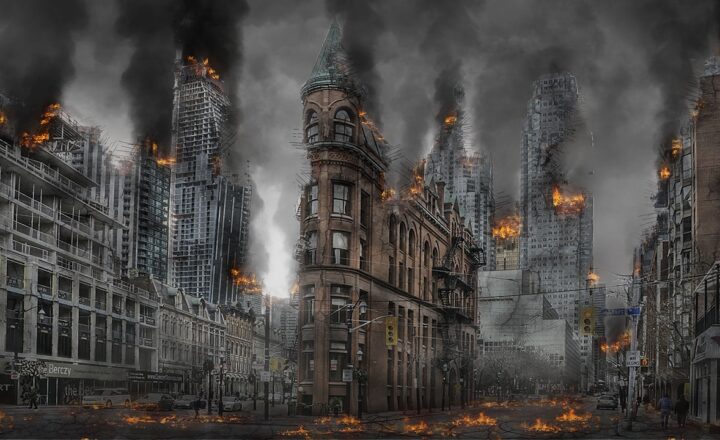Exploring the Most Infamous Tanks of All Time and Their Unique Histories
November 11, 2024

Tanks have played a crucial role in modern warfare, shaping battles and influencing military tactics across the globe. From their inception in World War I to the high-tech machines of today, tanks carry a legacy of power, intimidation, and innovation. In this article, we will dive deep into some of the most infamous tanks in history, exploring their unique characteristics, technological advancements, and the historical contexts that made them legendary.
1. The Mark I: The Birth of the Tank
The Mark I was the world’s first tank, introduced by the British Army in 1916 during World War I. Designed to break through the trenches that characterized this brutal conflict, the Mark I featured a rhomboid shape that allowed it to cross trenches and rough terrain.
– Specifications: The Mark I was powered by two engines and had a crew of 3-6 men, depending on the model. It was armed with machine guns and could traverse rough landscape while offering protection to its crew.
– Historical Impact: Despite its limitations—such as a slow speed and lack of armor against artillery—the Mark I set the stage for future tank designs. Its introduction marked a significant shift in warfare, demonstrating the effectiveness of armored vehicles on the battlefield.
2. The Panzer IV: Germany’s Workhorse
The Panzer IV is one of the most iconic tanks of World War II and served as the backbone of the German armored forces. Introduced in 1937, it went through various upgrades throughout the war, making it highly versatile.
– Specifications: Early versions were equipped with a short-barrel 75mm gun, but later models featured a much more powerful long-barreled gun, enhancing its anti-tank capability.
– Historical Impact: The Panzer IV was involved in numerous major battles, including the Blitzkrieg campaigns that swept across Europe. Its ability to adapt to new threats and challenges made it a formidable opponent until the later stages of the war when it faced more advanced tanks.
3. The T-34: The Soviet Legend
The T-34 is often regarded as one of the best tank designs in history. With its debut in 1940, it was revolutionary in both armor and armament.
– Specifications: Initially armed with a 76.2mm gun, the tank’s sloped armor design provided excellent protection against enemy fire while allowing for a lower profile.
– Historical Impact: The T-34 played a pivotal role in the Eastern Front and is credited with turning the tide in favor of the Soviet Union during World War II. Its production was cost-effective, with over 84,000 units manufactured, making it one of the most produced tanks in history.
4. The M4 Sherman: The All-American Tank
The M4 Sherman was the primary tank used by the United States during World War II. Known for its reliability and ease of production, it became a symbol of Allied strength.
– Specifications: The Sherman was initially equipped with a 75mm gun, with later models featuring a more powerful 76mm gun. Its design allowed for strategic versatility across many fronts.
– Historical Impact: Over 50,000 Shermans were manufactured, and they served in all theaters of the war. The M4’s easy maintenance and adaptability made it a favorite among U.S. tank crews. They became instrumental in key battles such as D-Day and the Battle of the Bulge.
5. The Tiger I: The Fearsome German Behemoth
The Tiger I is perhaps the most infamous tank of World War II, known for its imposing size and firepower. Introduced in 1942, it became a symbol of Nazi armored warfare.
– Specifications: Equipped with an 88mm gun and heavily armored, the Tiger I was designed to engage and destroy any other tank on the battlefield. Its armor thickness made it difficult for most Allied tanks to penetrate its defenses.
– Historical Impact: The Tiger I was a formidable opponent that instilled fear in enemy forces. However, its complex design and heavy weight limited its production and mobility. Nonetheless, it became a legend due to its performance in battles like Kursk and El Alamein.
6. The Leopard 2: A Modern Marvel
Fast forward to contemporary warfare, the Leopard 2 is a main battle tank that showcases the advancements in tank technology since its introduction in the late 1970s.
– Specifications: The Leopard 2 is equipped with a powerful 120mm smoothbore gun, advanced armor protection, and cutting-edge targeting systems. Its combination of speed, mobility, and firepower makes it one of the best tanks in the world today.
– Historical Impact: Widely used by the German Army and several other NATO countries, the Leopard 2 has been integral in various conflicts post-Cold War, adapting to modern warfare challenges with superior technology.
7. The Future of Tanks: Innovations on the Horizon
As warfare continues to evolve, so do tank designs. Modern tanks are now incorporating unmanned systems, advanced sensors, and artificial intelligence to enhance their combat capabilities.
– Key Innovations: Future tanks promise enhanced automation, reduced crew requirements, and the integration of drone technology for battlefield reconnaissance.
– Looking Ahead: The rise of cyber warfare and high-velocity projectiles may shift the paradigm, calling for even more innovative designs in the years to come.
Conclusion
From the humble beginnings of the Mark I to the advanced technologies in modern tanks like the Leopard 2, the history of tanks is a fascinating chronicle of innovation and adaptation in warfare. Each of these infamous tanks has left an indelible mark on military history, shaping battles and influencing future generations of armored warfare. As we move forward, the evolution of tank technology will undoubtedly continue to change the landscape of conflict and defense strategies around the world.







